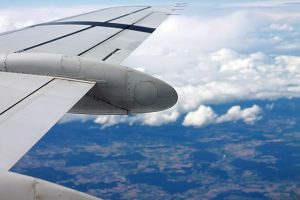
Most airplanes don’t have exposed engines. Rather, their engines are protected in a cowling. From large commercial jets to private turboprops, many airplanes use cowlings. Even if you’re familiar with the different types of airplane engines, though, you may not be familiar with cowlings. What is a cowling exactly, and why do airplane engines have them?
What Is a Cowling?
A cowling is a protective covering that’s used to house an engine. They are commonly found on automotive engines as well as airplane engines. By definition, a cowling is simply an engine covering. They cover and protect the engines on which they are used.
The next time you’re sitting at the airport waiting for your flight, look out the window at the tarmac. You’ll probably notice that most airplanes have a covering over their engines. These coverings are known as cowlings.
The term “cowl” means “hood.” Cowlings are essentially hood-like coverings for engines. Many airplanes feature cowlings. They’ll typically have a single cowling for each of their respective engines.
Why Airplane Engines
Cowlings offer several benefits when used on airplane engines. For starters, they provide physical protection against damage. Engines are less likely to sustain physical damage when encased in a cowling. The cowling will cover the engines while subsequently protecting them from physical damage.
Another reason airplane engines have cowlings is to reduce drag. Cowlings are meticulously designed to achieve a streamlined shape. With this streamlined shape, they reduce drag. Airplane engines will produce less drag thanks to cowlings.
Cowlings can protect airplane engines from overheating. All airplane engines produce heat. Even with cooling fins — the most common cooling method for airplane engines — they can still overheat. But cowlings can protect airplane engines from overheating by facilitating cooling. They will help to transfer heat away from the engines so that the engines don’t overheat.
Some airplanes feature large cowlings that cover their engines as well as part of their fuselage or even their cockpit. Large cowlings such as this are integrated into the airplane’s body. They still offer all of the same benefits as smaller cowlings, but they don’t just cover the airplane’s engines; they cover other parts of the airplane’s body.
In Conclusion
A cowling is an engine covering. Automobiles and airplanes both use cowlings for their respective engines. On airplanes, cowlings protect the engines from physical damage, reduce drag and protect the engines from overheating.



